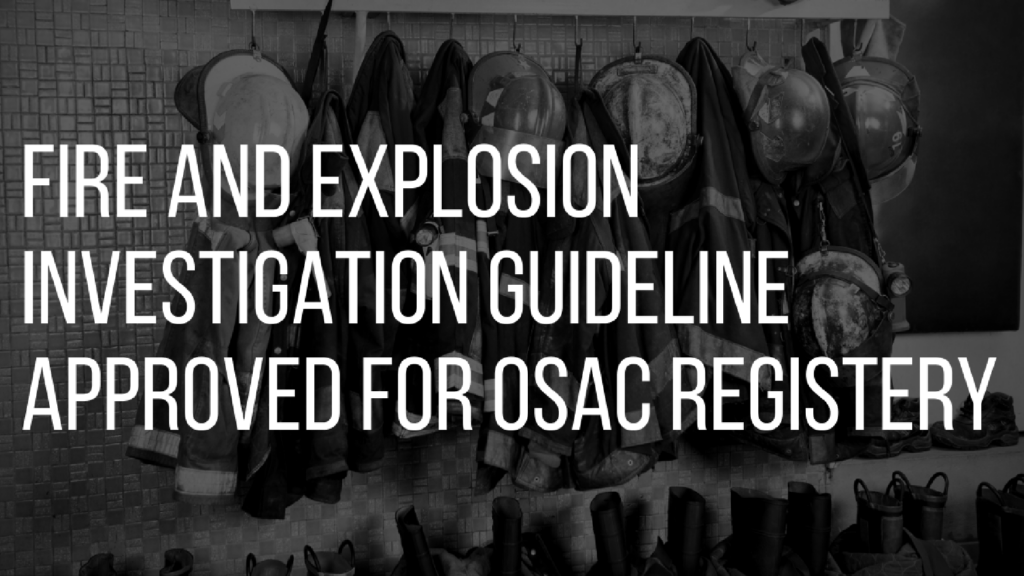Article originally published on www.nist.gov. Reprinted with permission.
OSAC, which is administered by the National Institute of Standards and Technology (NIST), is working to strengthen forensic science by facilitating the development of discipline-specific, science-based standards and guidelines for a broad array of forensic disciplines. To be posted to the OSAC Registry, standards and guidelines must have been developed using a consensus-based process that includes public comment and must pass a review of technical merit by forensic practitioners, academic researchers, statisticians and measurement scientists.
NFPA 921: Guide for Fire and Explosion Investigations, 2014 Edition(link is external) applies to the investigation of all types of fire and explosion incidents, both accidental and intentional, from residential and motor vehicle fires to multi-story high-rise fires and industrial plant explosions.
Craig Beyler, the chair of OSAC’s Fire & Explosion Investigation Subcommittee, shepherded the guide through the OSAC approval process. “NFPA 921 is regarded as the standard of care in the fire and explosion investigation community and in the courts,” Beyler said. “It sets a high bar for science-based investigation and analysis of fire and explosion incidents.”
NFPA 921 addresses all aspects of fire and explosion investigation, including methodology, evidence collection and failure analysis. The document is used in the field, in training and in court, and it serves as a guide for rendering accurate opinions on origin, cause, responsibility and prevention. Fire investigators who work for public agencies, insurance companies and litigation firms all rely on this document in their daily work.
Mark Stolorow, director of OSAC affairs at NIST, explained that OSAC scrutinizes existing standards and guidelines from a range of standards developing organizations for their technical merit and due process.
“Elevating NFPA 921 to the official OSAC Registry is an endorsement of the high quality of this document and encourages its adoption by all agencies and practitioners who investigate scenes of fires and explosions,” Stolorow said.
OSAC does not have authority to enforce standards. However, by endorsing standards, OSAC promotes their adoption by forensic science service providers and by accrediting bodies that audit participating agencies for compliance.
While accredited forensic service providers are currently audited to general laboratory standards, there are very few discipline-specific standards that the laboratories can be audited against. The goal of OSAC and its 550-plus members is to facilitate the development of science-based standards for each of 25 distinct forensic science disciplines and to promote their widespread adoption.
WOULD YOU LIKE TO SEE MORE ARTICLES LIKE THIS? SUBSCRIBE TO THE ISHI BLOG BELOW!


